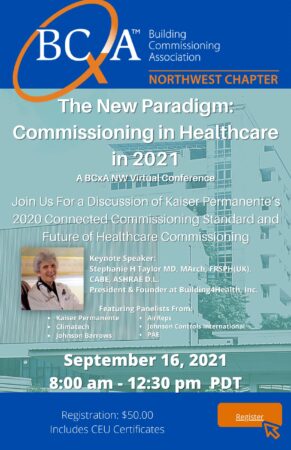Tuesday, September 28
9 a.m. to 10 a.m. Pacific Time
Ongoing commissioning (OCx) has become an industry buzzword in recent years. Typically, OCx applies to new, high-performance buildings, in which a building automation system (BAS) collects and analyzes performance data to help fine-tune the building’s operation. However, such high-performance buildings make up a very small portion of the current building stock in the U.S.
In this course, we’ll demonstrate how many existing buildings can greatly benefit from a simpler form of OCx. We will cover the processes used, overall best practices, and the benefits of applying these concepts to a variety of buildings.





